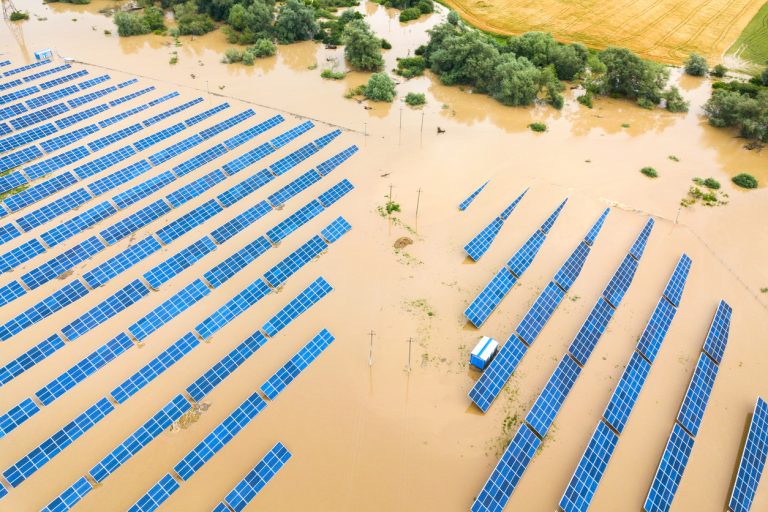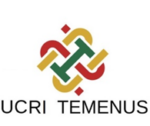
While data on climate risks grows, effective risk communication is essential to translate complex information into actionable knowledge. The importance of engaging the public, especially in vulnerable communities, to build resilience and prepare for the challenges of a changing climate cannot be forgotten
Our climate is changing. Higher temperatures, rising sea levels and more frequent and severe weather patterns all expose and exacerbate vulnerabilities in communities around the world. While data on climate risks is more readily available than ever, thanks to initiatives like the Lloyd’s Register Foundation World Risk Poll, communications strategies must go beyond the figures, and better engage the public to build resilience among vulnerable communities, particularly in the Global South.
In this article, David Reid, Director of Global Advocacy & Partner Campaigns at global safety charity Lloyd’s Register Foundation and Visiting Fellow in Risk Communication at the Institute for the Public Understanding of Risk (IPUR) at the National University of Singapore, explains how to engage the public at every stage and empower communities to become more ‘risk-curious’.
The missing link: Creating effective risk communication
Effective risk communication is a three-part process. First comes awareness – highlighting the nature of the risks the public is facing, as well as their likelihood.
More than ever, we can quantify risks on a global scale. Data, combined with advanced modelling techniques, allows us to identify weather patterns, predict potential disasters and give communities early warnings. Disaster and risk resilience are at the top of many high-level conferences’ agenda, and initiatives such as the Lloyd’s Register Foundation World Risk Poll provide crucial insights into what people perceive as the greatest risk to their safety. The World Risk Poll is unique in that it reaches populations where little to no data exists, enabling policy makers to make informed decisions to keep people safe.
Next comes literacy, ensuring members of the public are equipped with the necessary tools to evaluate and understand risks. A crucial factor to consider is the risk trade-off, which describes the approach communities take when it comes to risk and decision-making.
When multiple risks must be addressed, every decision involves some form of risk trade-off. Some risks are weighed more heavily based on several factors, including likelihood and frequency, but also social norms, beliefs, values and general awareness. Other risks, on the surface, appear to matter less. For example, sharks tend to instil more fear in people than driving to work, with even just one reported attack leaving beaches deserted in its aftermath. Yet, few people are likely to reconsider getting into their car after reports of an accident, despite the fact the likelihood of dying in a road-related accident is much higher than being eaten by a marine predator. Often, immediate risks tend to be prioritised when it comes to preventative measures, while future ones can be more easily discounted.
More often than not, economic factors will also play a part, especially when looking at low-income communities. Expensive tsunami guards, for instance, are less likely to be built in low-income communities due to high costs and (relatively) lower likelihood of an incident occurring when compared to others risks – despite the potentially devastating consequences.
Finally, the third and final stage is engagement – which is where we must concentrate our efforts. There is currently a missing link when it comes to the everyday choices that people make to keep themselves safe, whether they’re at the frontline of climate change related risks or not. Most are aware of risks, but communication strategies have yet to drive behavioural changes consistently. A new approach, however, could be the key to change everything.
The importance of early involvement: Disaster relief and policy
All too often, we forget the role communities and individuals can and should play, especially when it comes to the implementation of key policies, and the changes in behaviours required to make an initiative successful at every stage.
Community projects are often at the forefront of disaster relief efforts, too, demonstrating the impact key figures and groups can have over legislators and large organisations. In Sierra Leone, the success of the country’s COVID-19 vaccine roll-out is largely attributed to the early mobilisation of village elders and the leaders of political, youth and religious groups in hard-to-reach communities. After identifying 16 districts with low vaccination rates, the Red Cross Society undertook large efforts to engage key figures within the community, holding orientation meetings to address key concerns, and distributing posters and awareness cards to build trust. As a result, those leaders used their influence, and daily vaccination uptake increased from nine to 55 people in two to three days(1).
One stage where community involvement is overlooked, however, is the research stage. Citizen science is the name given to the practice of public participation and collaboration in scientific research to increase scientific knowledge. Local volunteers, science clubs or community groups have in-depth knowledge and their environment and can help gather data or design better surveys from the offset.
So far, citizen science has supported countless conservation initiatives across the world. Now, disaster risk resilience projects are beginning to harness their power. STREVA (Strengthening Resilience in Volcanic Areas), for example, was a University of Leeds research project that brought experts and the public together to monitor volcanic activity and reduce its negative consequences on communities(2). More recently, the British Geological Survey announced the launch of the myHAZ citizen science project(3), in partnership with the National Emergency Management Organisation (NEMO) of St Vincent and the Grenadines and the University of the West Indies’ Seismic Research Centre. The project aims to develop a mobile phone app designed to collect and share observations of natural hazards and their effect in real-time in Trinidad and Tobago.
The power of storytelling and cultural relevancy
Without a degree of cultural understanding, there can be no efficient risk communication and meaningful behaviour change.
First, we must go back to communications basics, and consider our audience. One size fits all does not work when it comes to risk and disaster communications – different cultures will have different ways of communicating and approaching risks.
This is where initiatives such as Project Wavelength come in, led by the Lloyd’s Register Foundation Institute for the Public Understanding of Risk. Understanding how different people think about risk, and what motivates these differences, is a fundamental consideration. While the project is ongoing, its first report, exploring risk perception gaps in government risk communications in Singapore, South Korea, and China, found that less than half of South Korean respondents (41.3%) recalled government-disseminated risk information(4). The report also highlighted crucial cultural differences, with Singaporeans associating risk-related government information with higher perceived risks while the opposite trend was observed in China, further emphasising the importance of cultural context in risk communications.
Beyond the volume of communications, many studies have shown the form, sometimes over the content, matters. Storytelling is one of the world’s oldest methods of passing on information and cautioning others against risks. Many Icelandic folkloric tales, for example, aim to teach children how to live and interact with an often-unforgiving environment under the cover of stories featuring trolls, elves and ghosts. Similar things can be said about traditional songs and works of art – which could hold the key to engaging certain communities.
Engagement and empowerment
Until we consider community engagement, there can be no meaningful behavioural changes among vulnerable communities. Risk communication and prevention can no longer be a one-way dialog between risk practitioners and the public; we must now take the necessary steps to empower people to become risk-curious – and risk-engaged.
Much like political movements, starting at a grassroots level, involving early (and often), and devising engaging communications could very well be the key to empowering individuals to become leaders in risk prevention and develop better solutions – thus engineering a safer tomorrow.
References
- https://www.news-medical.net/news/20240314/Rapid-COVID-19-vaccine-uptake-in-Sierra-Leone-Impact-of-intensive-delivery-initiative.aspx
- https://environment.leeds.ac.uk/see-research-innovation/dir-record/research-projects/917/strengthen-resilience-in-volcanic-areas-streva#:~:text=STREVA’s%20work%20will%20generate%20improvements,assets%20more%20vulnerable%20to%20volcanic
- https://vct.myhaz.app/
- https://ipur.nus.edu.sg/wp-content/uploads/2023/12/Project-Wavelength_-Government-risk-communications-in-Singapore-South-Korea-and-China.pdf
Find out more about Lloyd’s Register Foundation here.
About Lloyds Register Foundation
Lloyd’s Register Foundation is an independent global charity that supports research, innovation, and education to make the world a safer place. Its mission is to use the best evidence and insight to help the global community focus on tackling the world’s most pressing safety and risk challenges. For more information, please visit www.lrfoundation.org.uk
